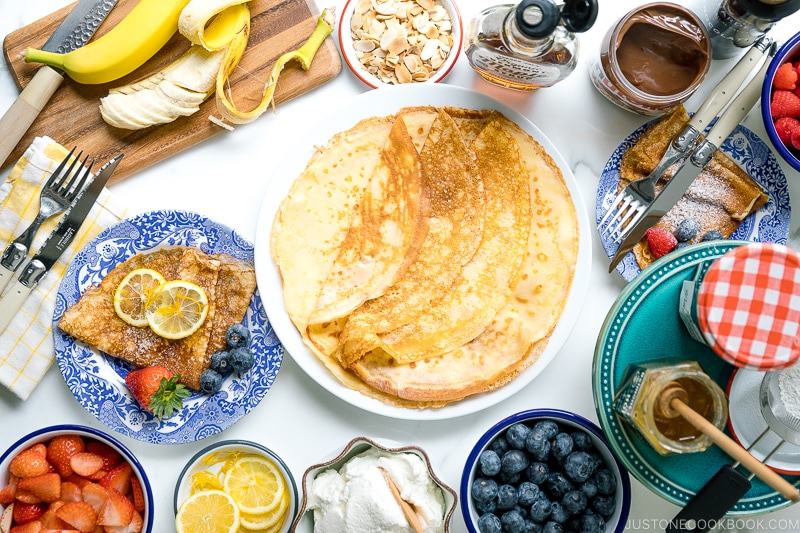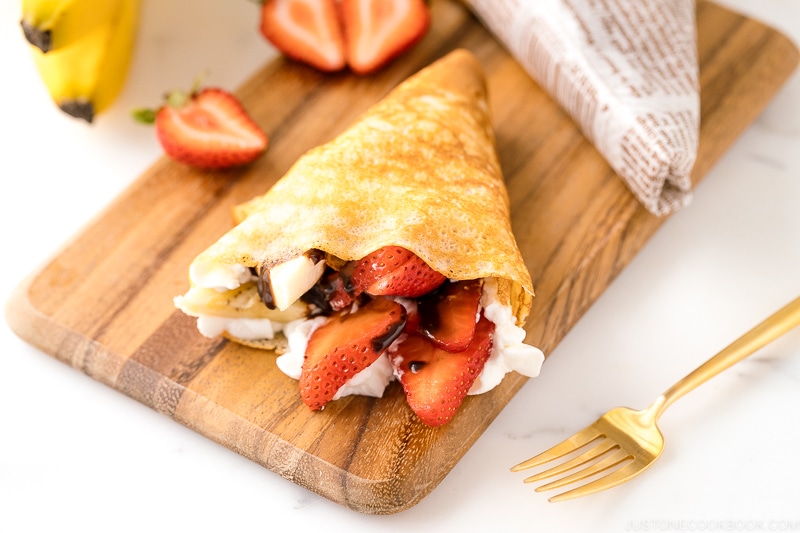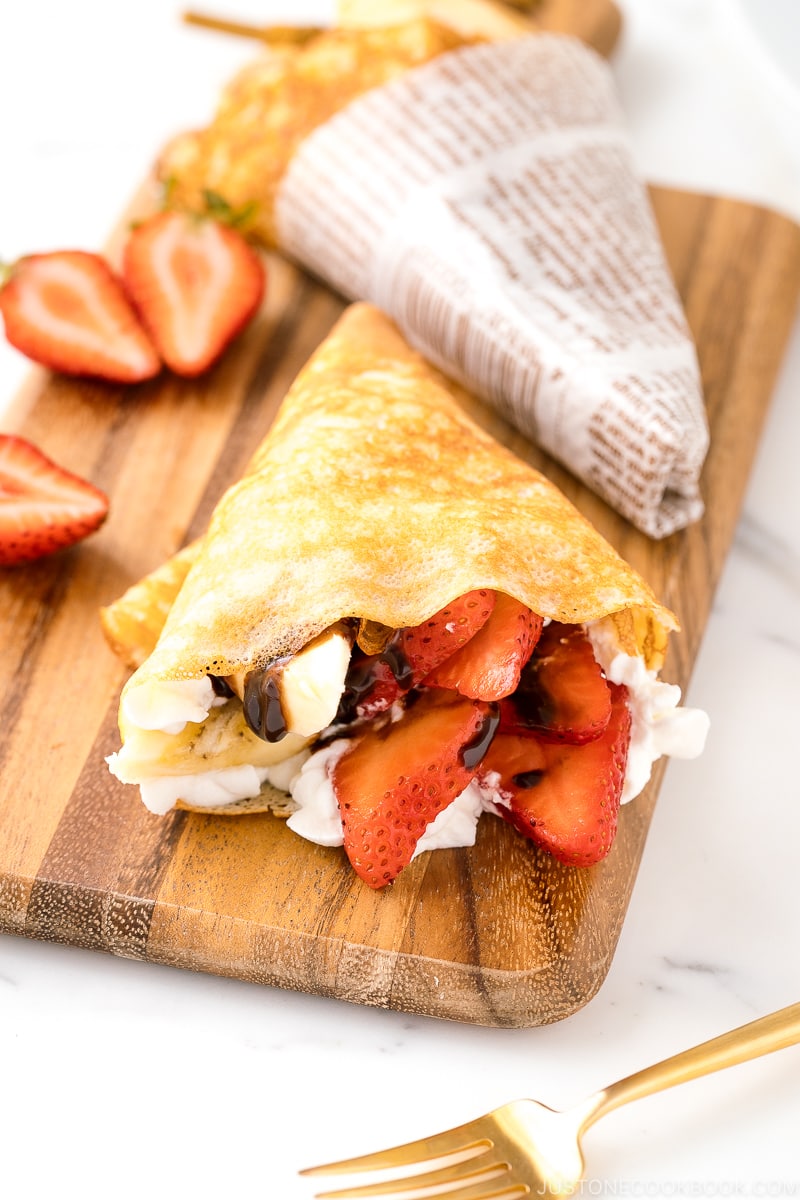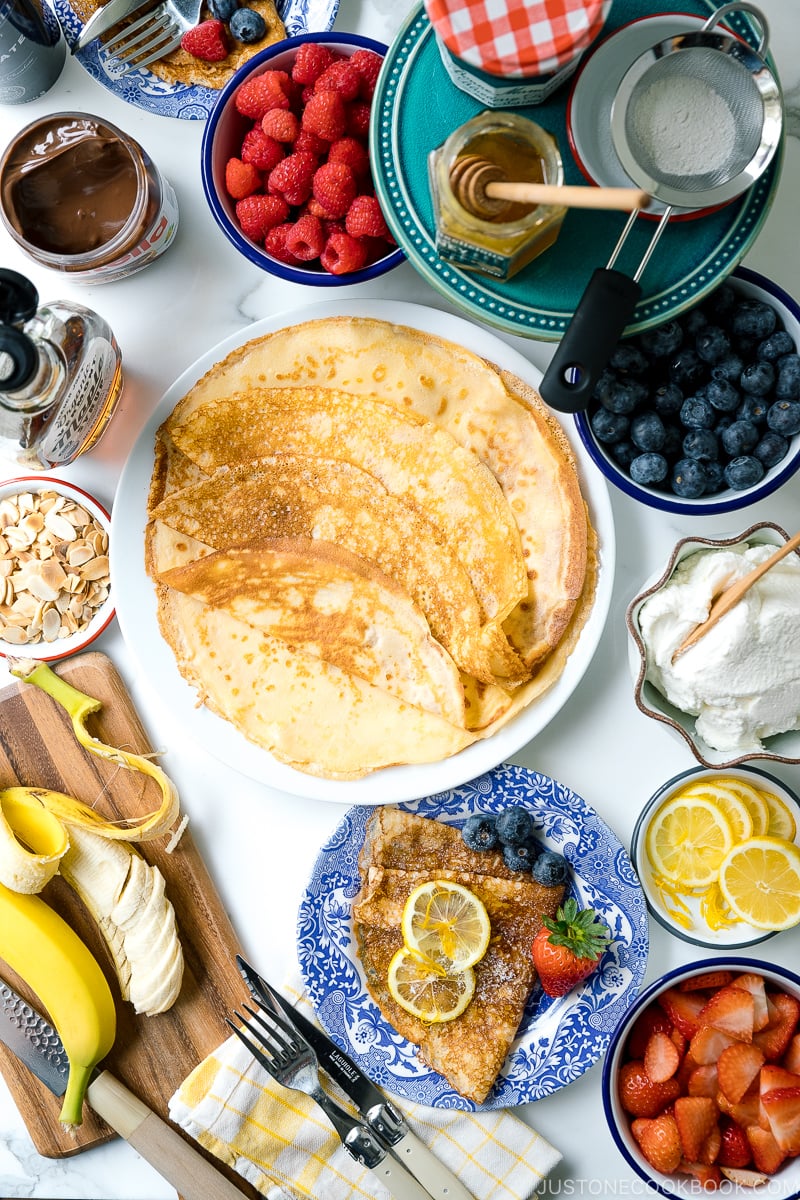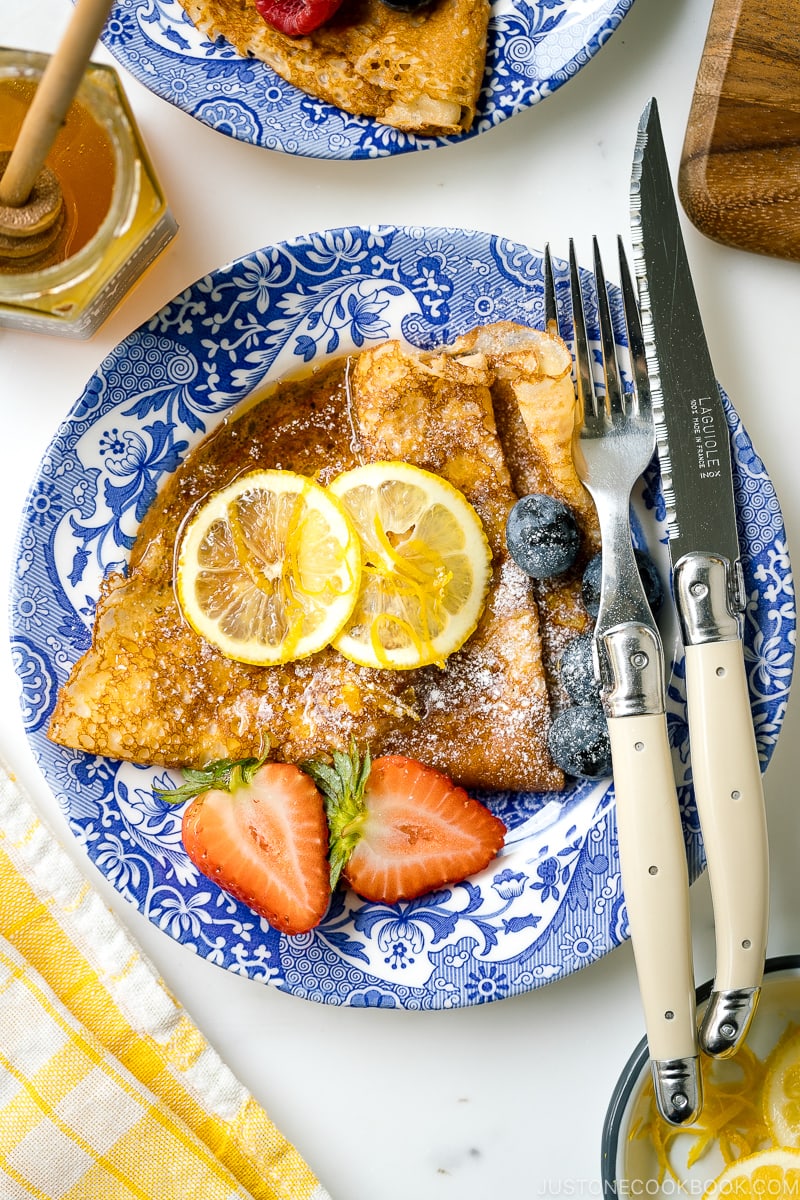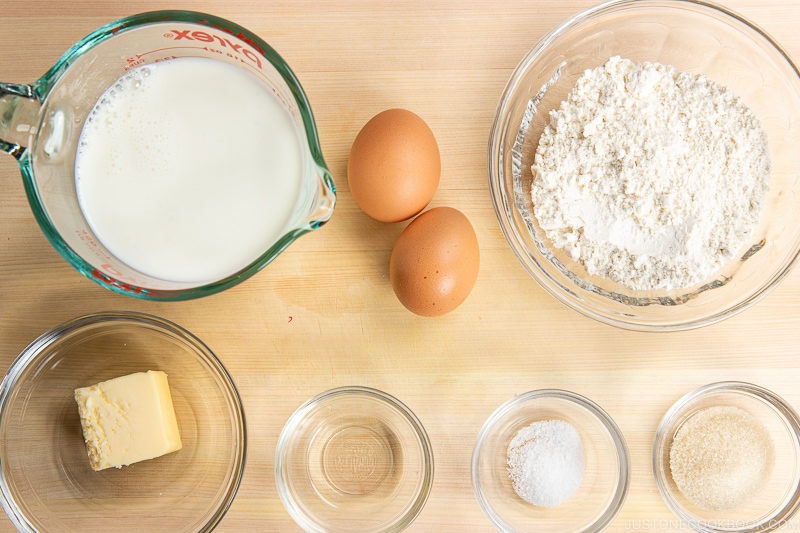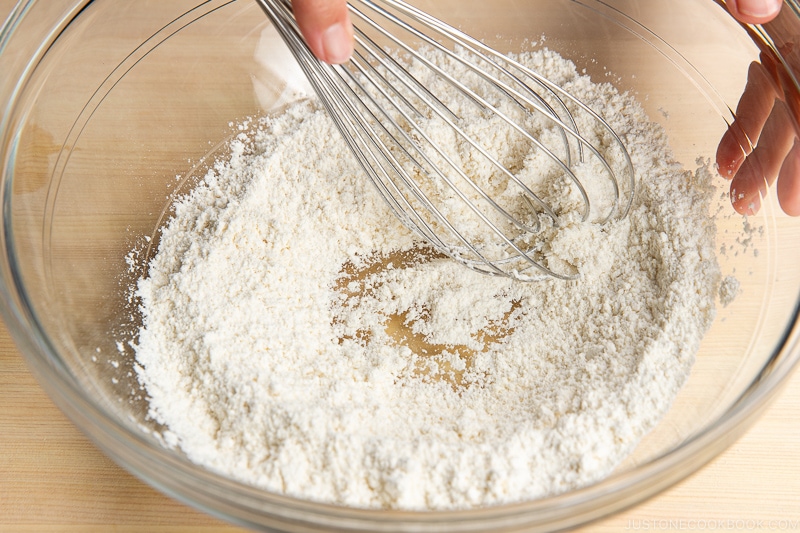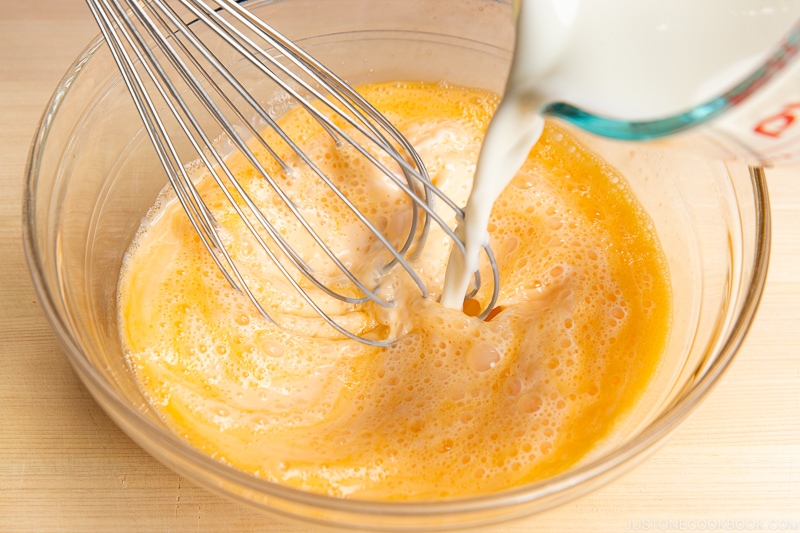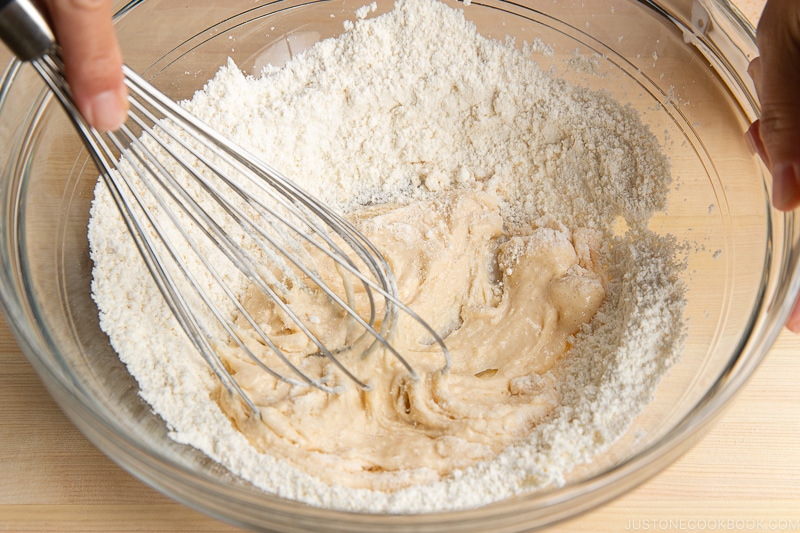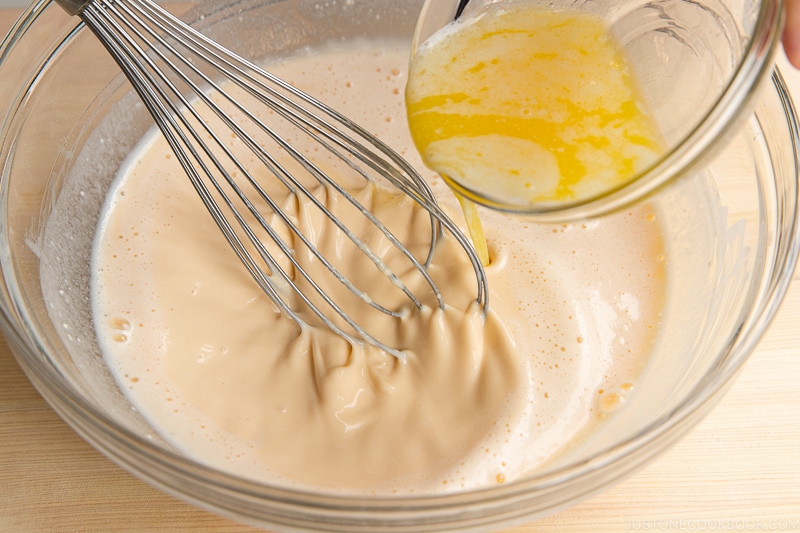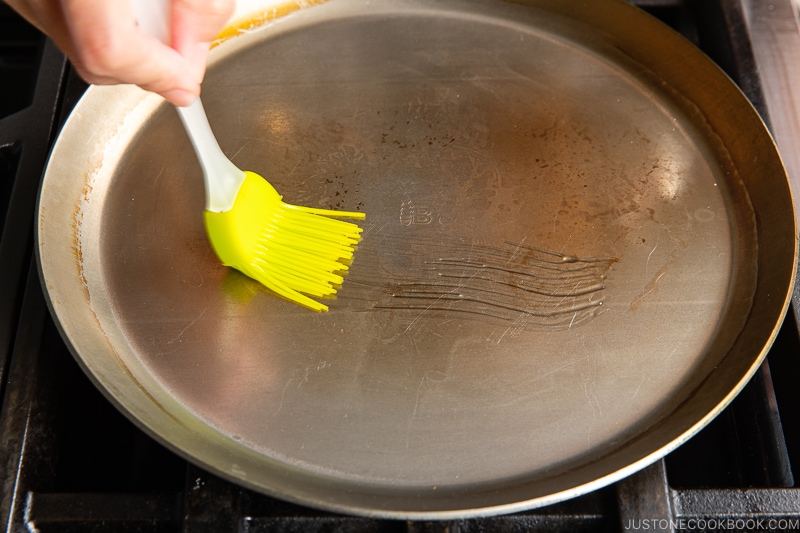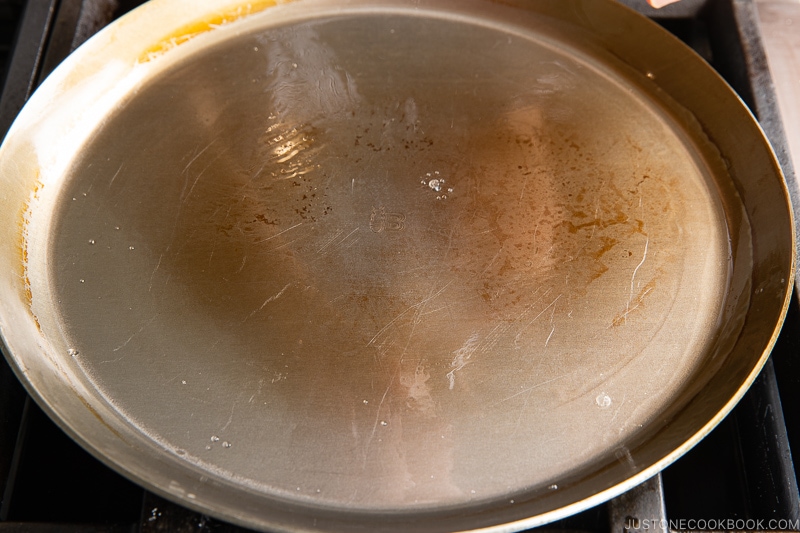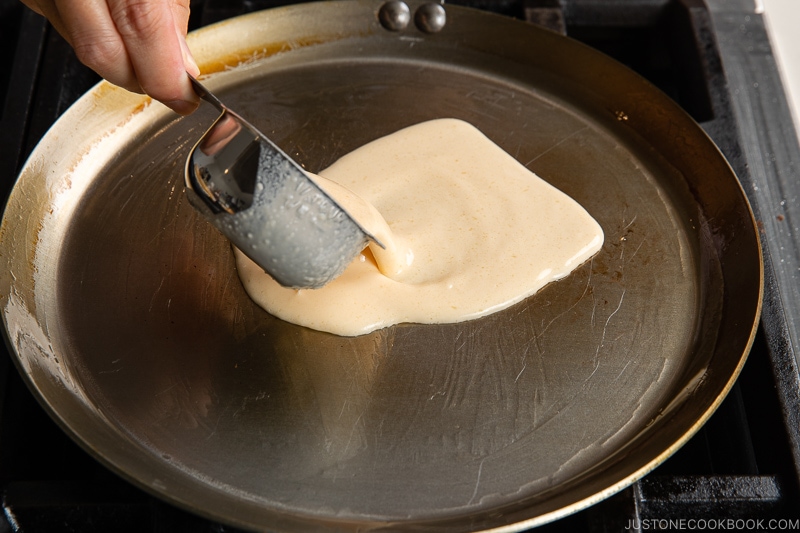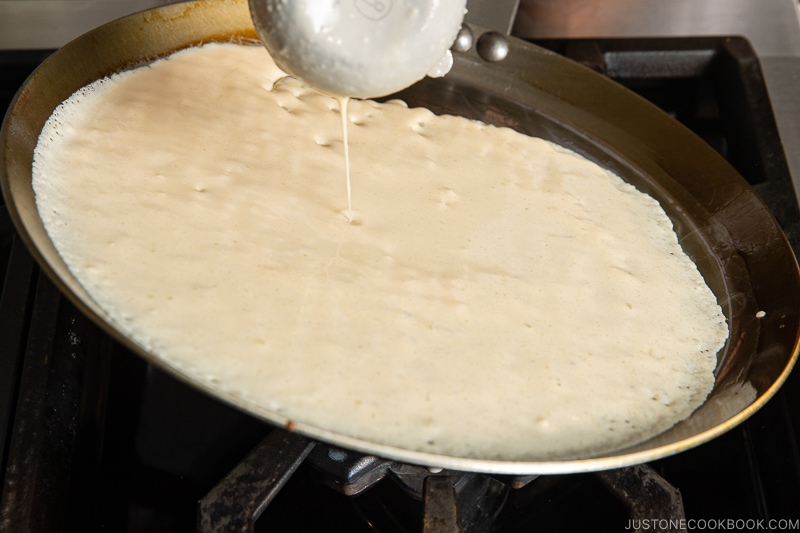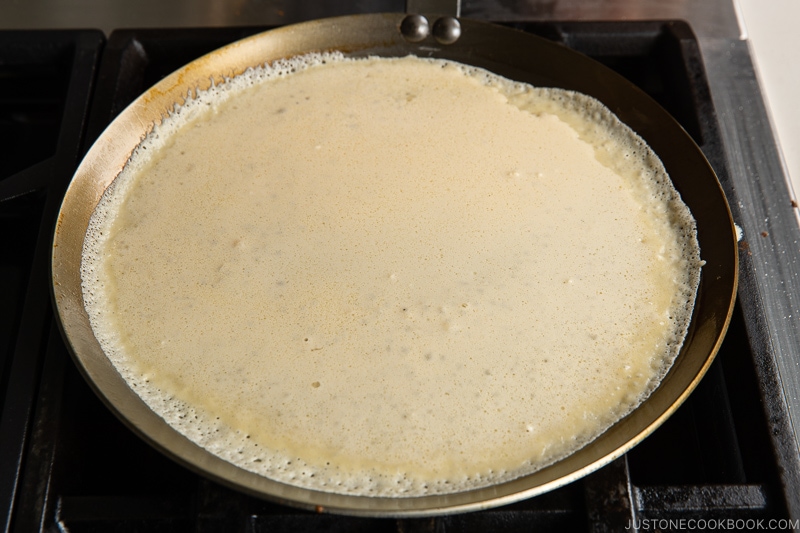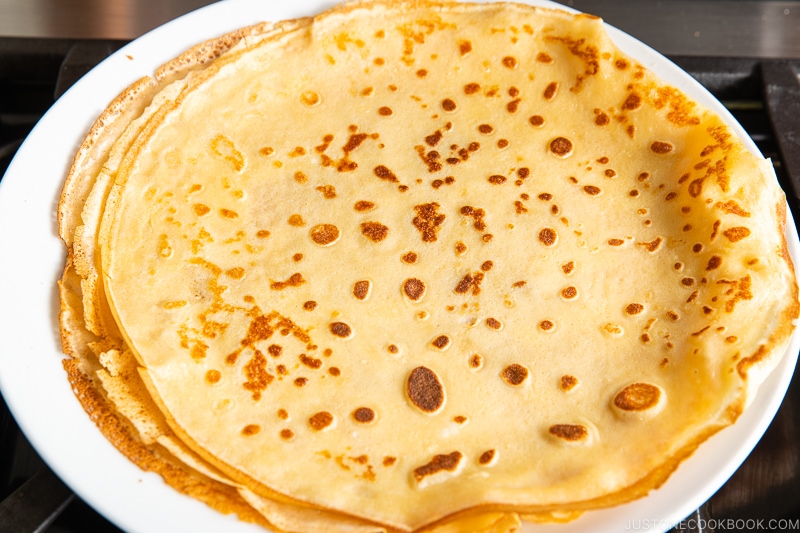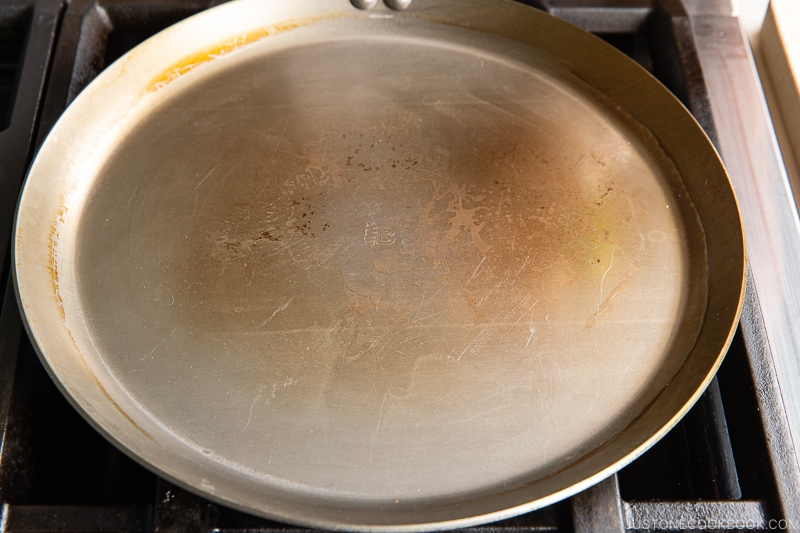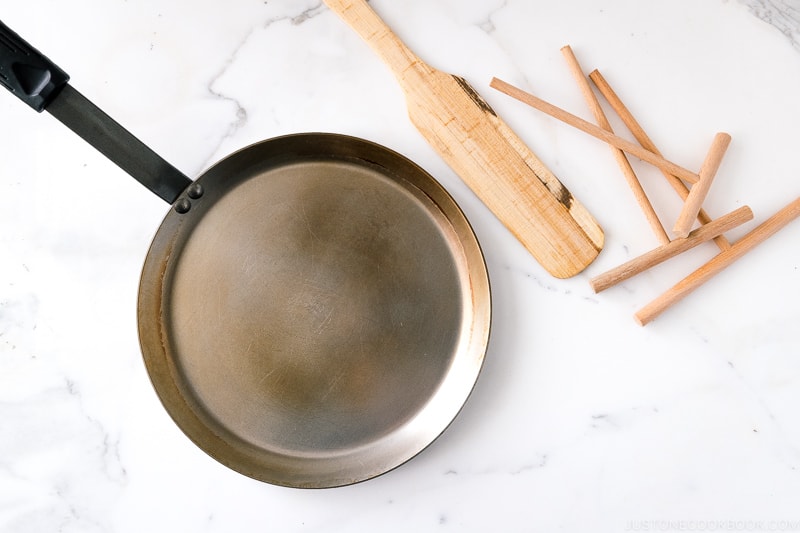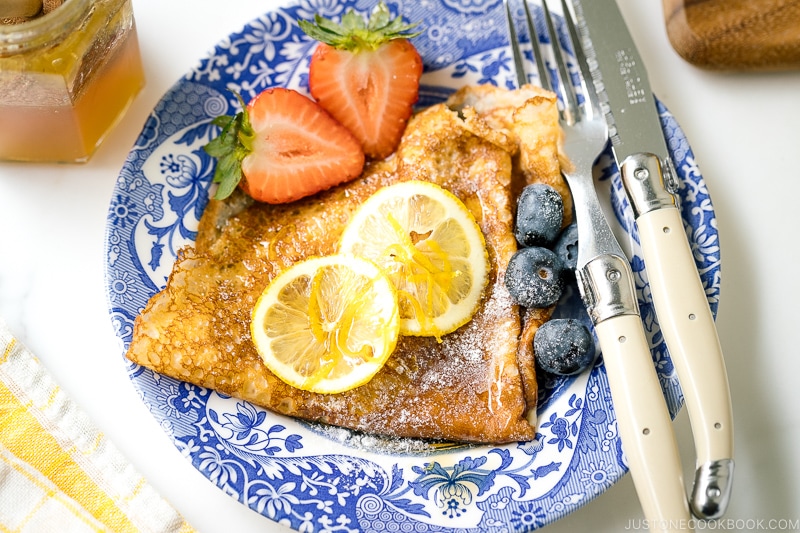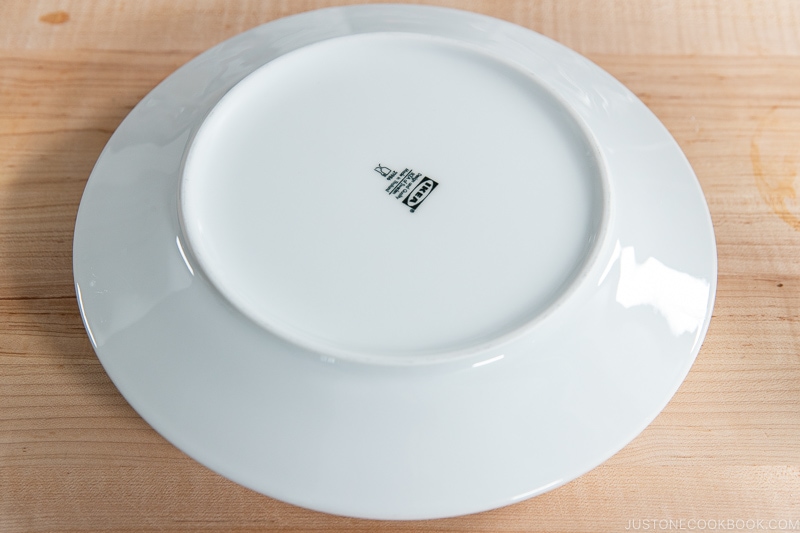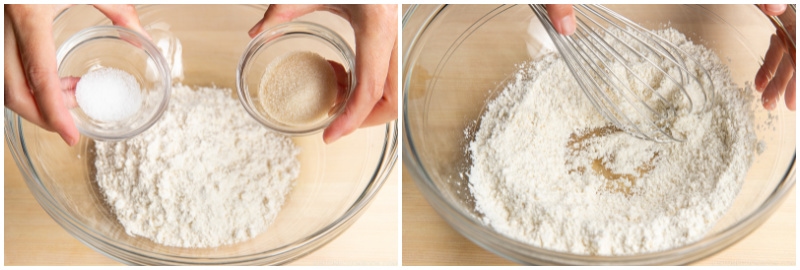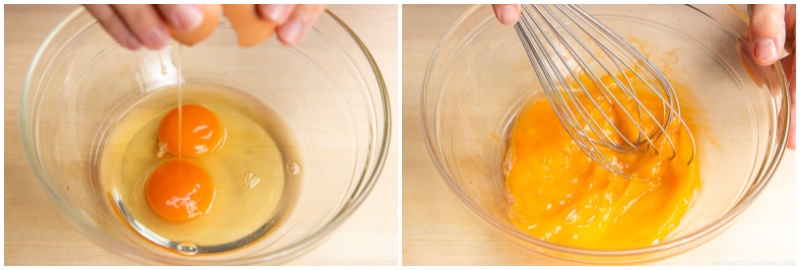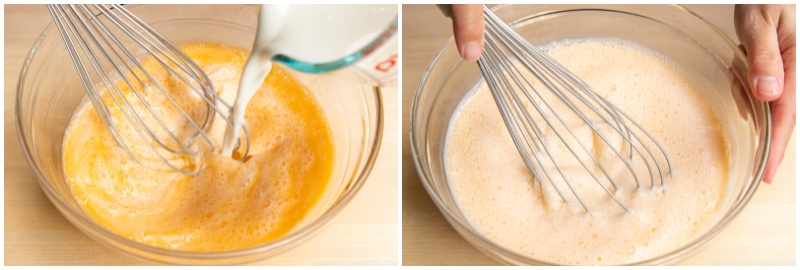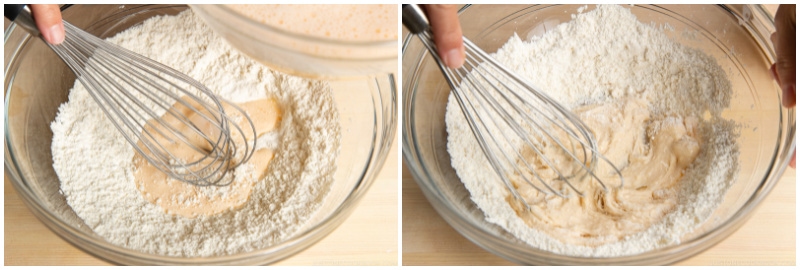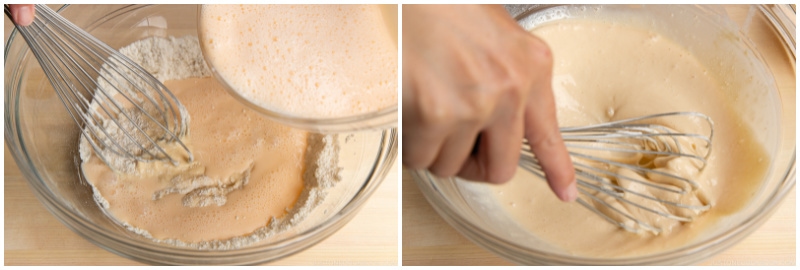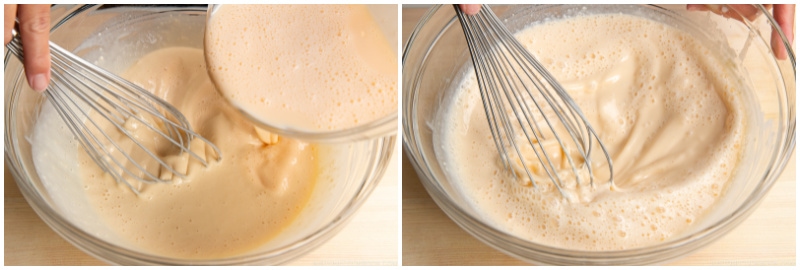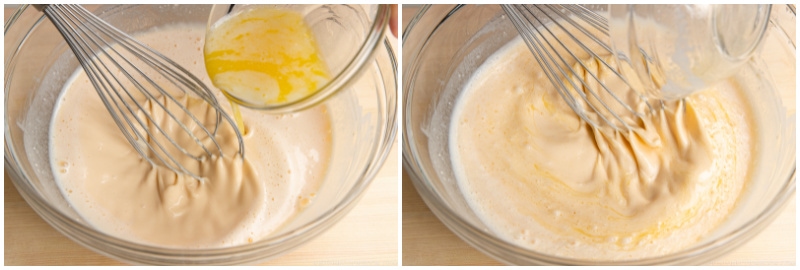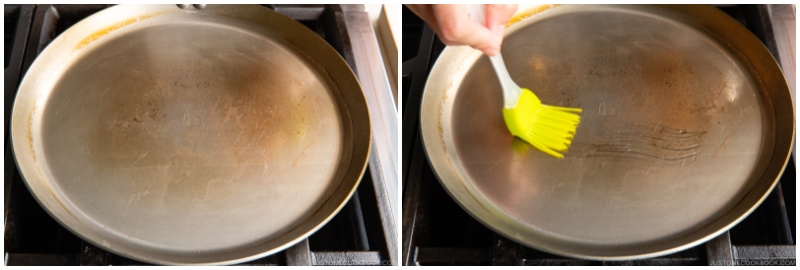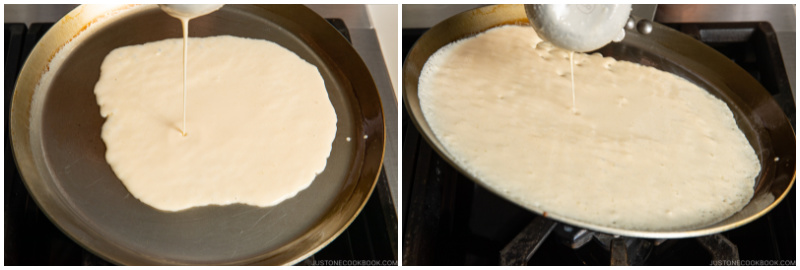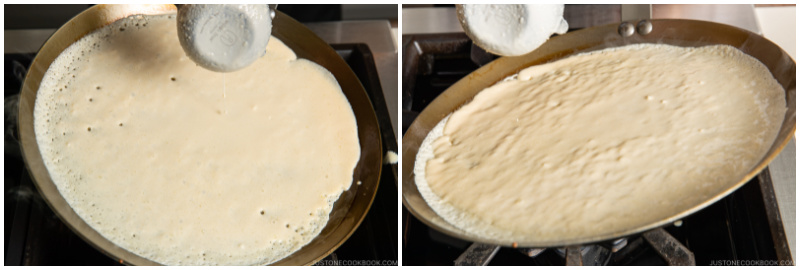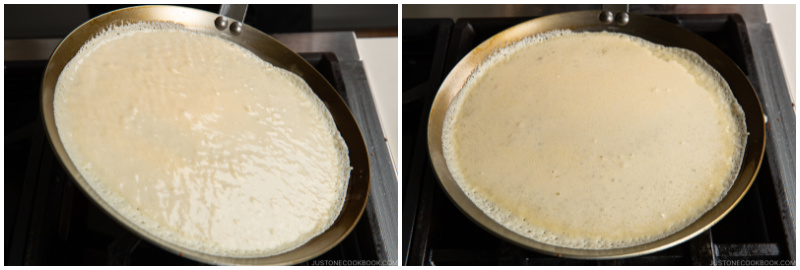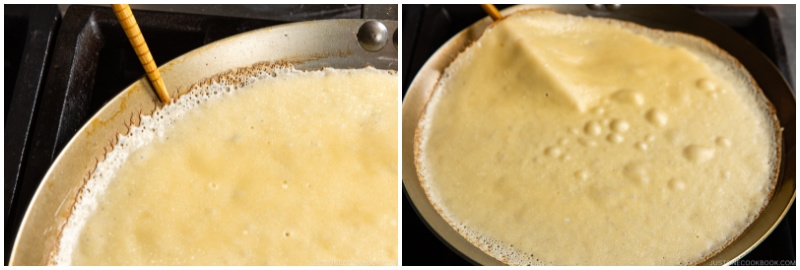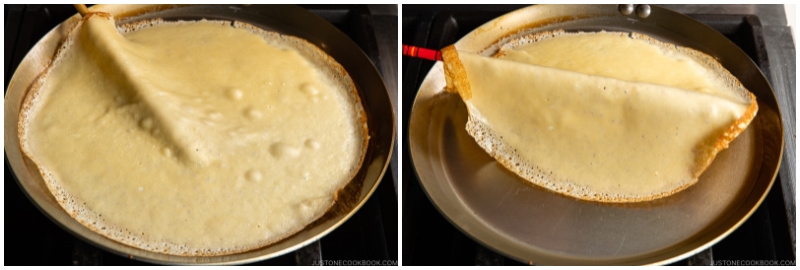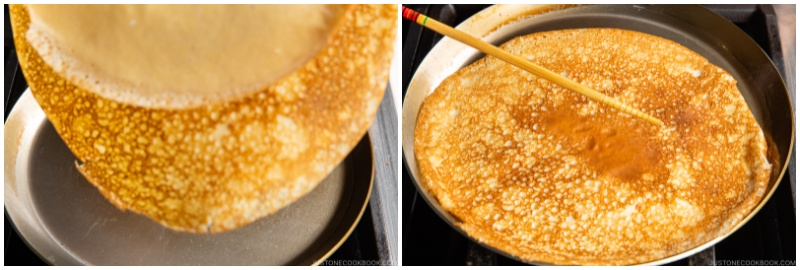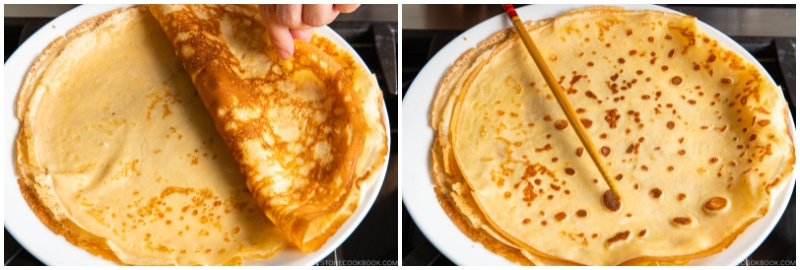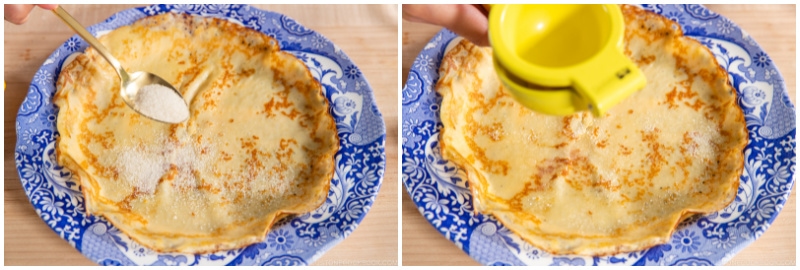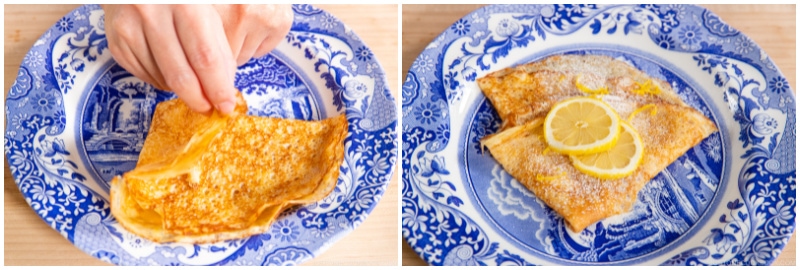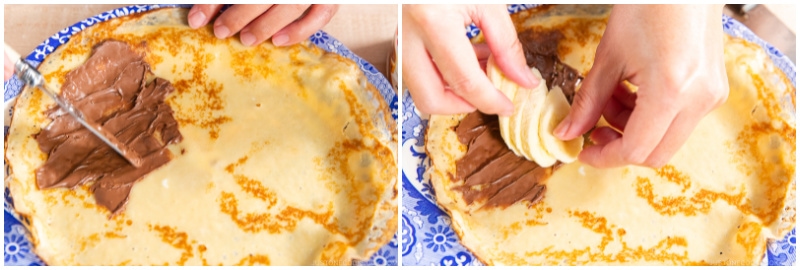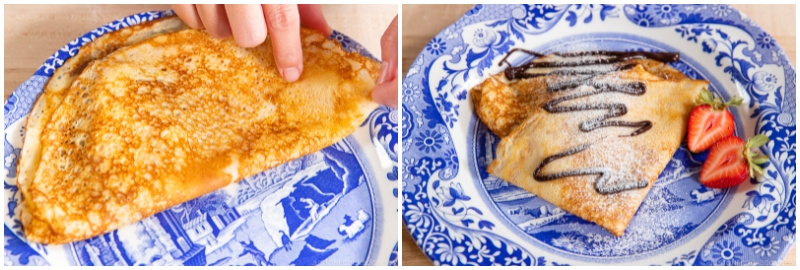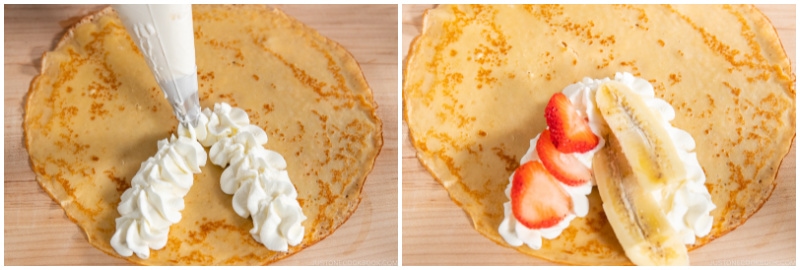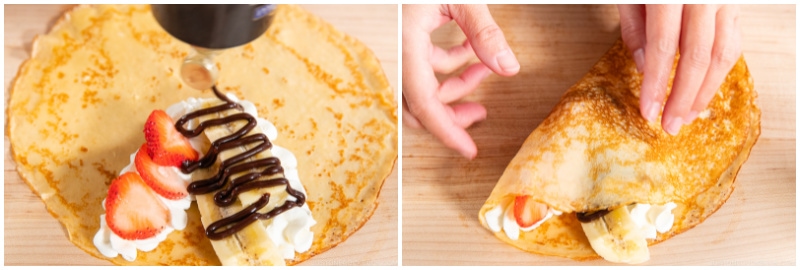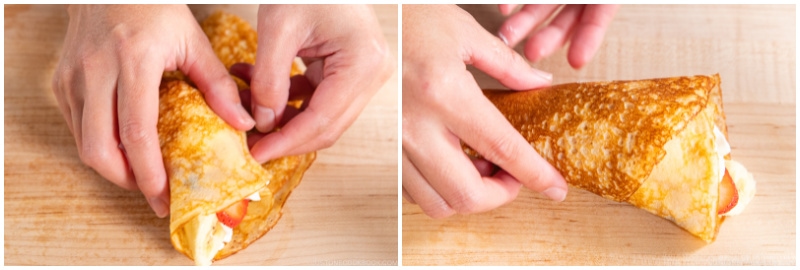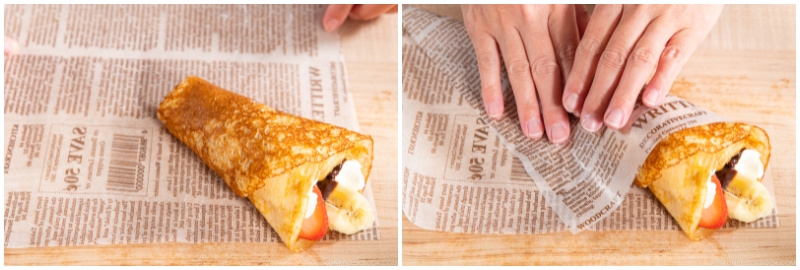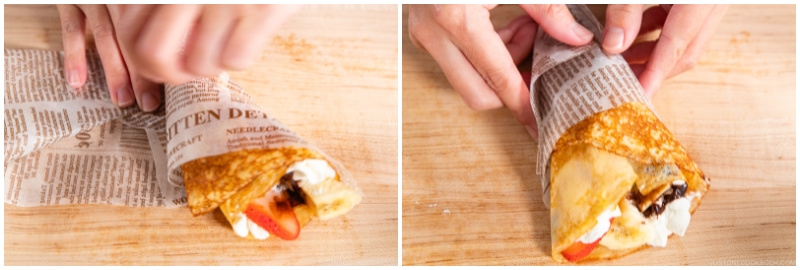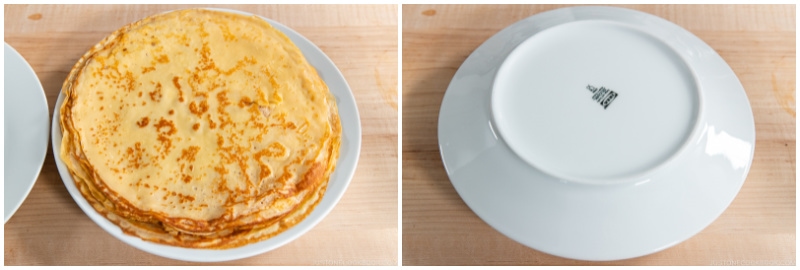Crepes are one of my favorite things to enjoy for brunch, but I used to think they were hard to make. They seem so fancy, but it turns out they are easier to make than you think. Since my kids also love them, I was determined to find the best crepe recipe and finally created the perfect one after many trials. Today, I’m going to share all the tips and techniques with you. After reading this post, you will be ready to make mouth-watering crepes for any occasion. And the best thing about these homemade crepes? You can fill or top them with literally anything!
What Are Crepes?
Crepes are very thin, delicate pancakes made of flour, milk, egg, butter, sugar, and salt. They can be enjoyed sweet or savory, depending on what you serve them with. For example:
Sweet crepes: lemon and sugar (aka classic French crepes), Nutella, jams, honey, maple syrup, fresh fruits (strawberries, blueberries, raspberries, and bananas), chocolate syrup, whipped cream, etc. Savory crepes: ham, cheese, eggs, mushrooms, tomatoes, avocado, bell peppers, onion, herbs, etc.
The Crêpes originated in the Brittany region of France but the love for crepes has spread all over the world, including Japan.
Popular Harajuku Crepes in Japan
In Japan, crepes are considered street food, and we don’t really have the custom of eating crepes at home. If you visit Japan, you will see endlessly creative Japanese adaptations of crepes. Takeshita Street in Harajuku is known for its numerous crepe shops, and I used to hang out there to eat crepes with friends in high school. Crepes are more of a destination food, whether it’s in Harajuku, at a festival, or at an amusement park. Japanese crepes are folded or rolled up and filled with lots of whipped cream, fruits, and sweet syrup. They are often wrapped in a paper cone, so it’s easy to carry and enjoy.
Why is this the Best Homemade Crepe Recipe?
It feels boastful to name this recipe “The Best” crepes, so I wanted to explain why. In my humble opinion, this is the best because:
Uses only 6 easy ingredients – You most likely have them in the pantry already. No special equipment – You don’t need to use a blender like some recipes suggest; just a whisk and bowls will do. No need to rest the batter – Yet it yields great results! Easy to multiply or halve the recipe – An important factor for me as I’m horrible at math. Perfect result. Every. Single. Time.
Ingredients You’ll Need
Cake flour Sugar Salt Eggs Milk (whole or reduced-fat) Butter (you can use salted, but omit salt)
That’s it! I’ll talk about topping choices later in the post.
How to Make The Best Homemade Crepes
13 Must-Read Tips to Make The Best Homemade Crepes
A smooth batter is crucial for making a light and springy crepe. Before you head straight into the kitchen, read these tips and techniques:
Tip #1: Let the eggs and milk come to room temperature
Cold eggs and milk can re-harden the fat in the batter (butter in this recipe), making the batter appear curdled or grainy. I learned this the hard way when I started making crepes. To avoid this, remove the eggs and milk from the refrigerator about 30 minutes before use.
Tip #2: Mix the flour with a whisk
You can always sift the flour using a fine-mesh sieve or sifter, but a quick method is to whisk the flour in a bowl a few times until you see no big chunks of flour.
Tip #3: Combine eggs and milk first
Instead of adding eggs and then milk to the flour mixture, I realized it works best (for me, at least) to combine the eggs and milk in a bowl first until smooth and homogenous, then add the egg/milk mixture to the flour in another bowl.
Tip #4: Gradually add the egg/milk mixture to flour
We must avoid lumps in the batter, which is our ultimate goal here. If you pour a lot of liquid into the flour at once, it will quickly form lumps and float in the liquid. Therefore, add a small amount of liquid and incorporate it into the flour until it forms a paste. Then, add another small amount of liquid, allowing the paste to slightly loosen. This way, your batter will be lump-free.
Tip #5: Add melted butter to room temperature batter
If you plan to make the batter ahead of time and keep it in the fridge overnight, make sure to bring the batter to room temperature before adding melted butter. Otherwise, the butter will solidify in the cold batter, resulting in a grainy texture. When combining ingredients, both should be at room temperature.
Tip #6: Lightly grease the pan
Grease the pan between batches with a pastry brush, silicone brush, or paper towel. You should not see any oil streaks, and that’s how thin the oil should be. I usually don’t use butter in the pan as it burns easily. Plus, there’s plenty of butter flavor in the batter. However, I’ve tried cooking the crepe with butter, as some JOC readers from France recommended. It did add more butter flavor and was delicious. Just make sure your heat is not too high.
Tip #7: Splash a bit of water to see if the pan is hot
This is my favorite trick to determine if the pan is hot and ready. The batter should make a sizzling sound when you add it to the pan. If water doesn’t sizzle, the pan is not ready yet. Don’t forget to splash water toward the edge of the pan as well, since that area takes longer to heat up.
Tip #8: Use a 1/3-cup measuring cup
A 1/3-cup measuring cup fills up the surface of a 10-inch (25 cm) crepe pan perfectly. The biggest mistake when making crepes is to either underfilling or overfilling the pan. Depending on the consistency of the batter and the size of the pan, you may need to experiment with different sizes of measuring cups or ladles. A standard-sized ladle of batter should fill a 12-inch (30 cm) pan. I prefer smaller crepes, which I’ll discuss further in my crepe tool section.
Tip #9: Tilt and swirl the pan
Pour the batter into the center of the pan and quickly tilt the pan to let the batter run toward one edge. Then swirl the pan to evenly distribute and cover the surface. If you see any small holes, shake the pan sideways to fill them in.
Tip #10: Don’t touch the crepe until the edges are golden brown
The crepe needs good heat contact, so avoid lifting and checking it frequently, as this will slow down the browning process. Depending on the crepe’s thickness and your stove type (gas or electric), the cooking time varies but should be between 1 to 2 minutes. If it’s taking 3 minutes, I’d say the heat is likely too low.
Tip #11: Use a long cooking chopstick or spatula to flip
I assume most of my readers own a pair of long cooking chopsticks (for cooking Japanese food)? I love using long cooking chopsticks for making crepes. The wooden material is gentler than a metal spatula, but either tool works. I spin the chopstick between my fingers as I slide it under the crepe and detach it from the pan. Cook for 10-15 seconds on the second side. Insert the chopstick under the crepe, lift it up and transfer to a plate.
Tip #12: Place the “pretty side” of the crepe down
Because I usually fold or roll up the crepes and want to show the “pretty side” for presentation, I stack them with the “pretty side” down. To prevent the crepes from sticking to each other, it’s important to stack them in the same direction.
Tip #13: Remove crumbs from the pan
If you’re using a carbon-steel crepe pan as I do, it’s important to clean the pan after every batch. Be sure to pick up any crumbs with a paper towel before greasing the pan. If anything is sticky and doesn’t come off, I recommend washing the pan and starting over. Otherwise, the batter will stick to that spot and may burn.
Equipment to Make Homemade Crepes
Do we need a crepe pan?
You don’t need a dedicated crepe pan and make excellent crepes. If you’re using a regular frying pan, a non-stick pan is probably the easiest choice, especially if you’re new to making crepes. For this reason, I bought a 10-inch (25 cm) carbon-steel crepe pan ($55), and here’s why:
It’s much lighter than regular carbon-steel pans (with no walls and a smaller handle), so I can swirl the pan with one hand. Larger crepe pans can be slightly heavier. The sides of the pan are lower so it makes it easier to check how far the crepe is browning and to slide a chopstick/spatula under it for flipping. A 10-inch crepe is a good size for adding filling ingredients.
I have to say I love my carbon-steel crepe pan and highly recommend it!
Do I need a Crepe Tool?
I bought a crepe spreader and spatula set ($13) to test whether these tools would help me make better crepes. After a few trials, I realized I didn’t really need them to make good-looking crepes. So, would I recommend you get these? No, I’d save the money and invest in a crepe pan instead.
How to Save Crepes for Later
Cover the crepes with another plate and store them in the refrigerator for up to 2 days. When you’re ready to eat, you can pop them in the microwave and reheat them for 2 minutes until warmed through.
How to Serve Crepes
Typically, my family eats 2-3 crepes per person, so I usually make 1-2 batches depending on how hungry they are. Here are some delicious ideas for serving your crepes: Sweet Crepes
Lemon and Sugar: Sprinkle a crepe with a teaspoon of sugar and squeeze some fresh lemon juice over it. Fold into quarters, top with chocolate sauce, dust with powdered sugar, and garnish with lemon zest and slices. Nutella and Banana: Spread a thin layer of Nutella over a crepe and top with sliced bananas. Fold into quarters, dust with powdered sugar, and garnish with strawberries. Jam, Fresh Fruits, and Whipped Cream: Spread your favorite jam over a crepe and top with fresh fruits and whipped cream. Fold into quarters and garnish with additional fruits. Japanese-Style Crepe in a Cone Shape: Roll up your favorite filling and topping inside the crepe for a fun, cone-shaped treat!
Savory Crepes
Ham and Cheese: Sprinkle grated cheese and sliced ham over a crepe. Grill until the cheese is melted and bubbly, then fold the crepe in half. This is similar to a cheese quesadilla. Smoked Salmon and Cream Cheese: Spread a thin layer of cream cheese over a crepe. Top with smoked salmon and either fold into quarters or roll up.
Editor’s Note: This post was originally published on April 15, 2011. The post was updated with new images, a new video, and a revised recipe on December 1, 2021, and republished on August 7, 2024.

